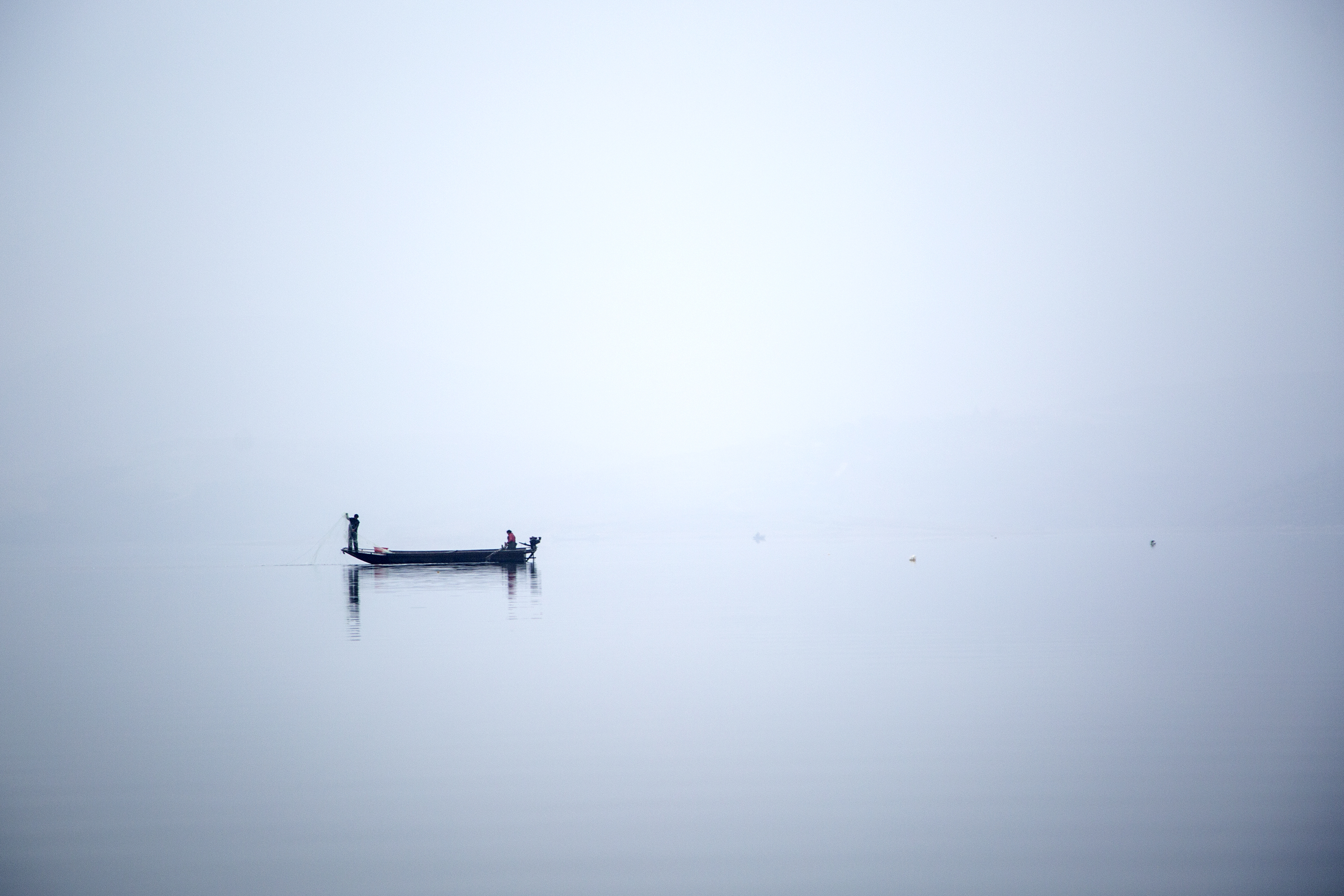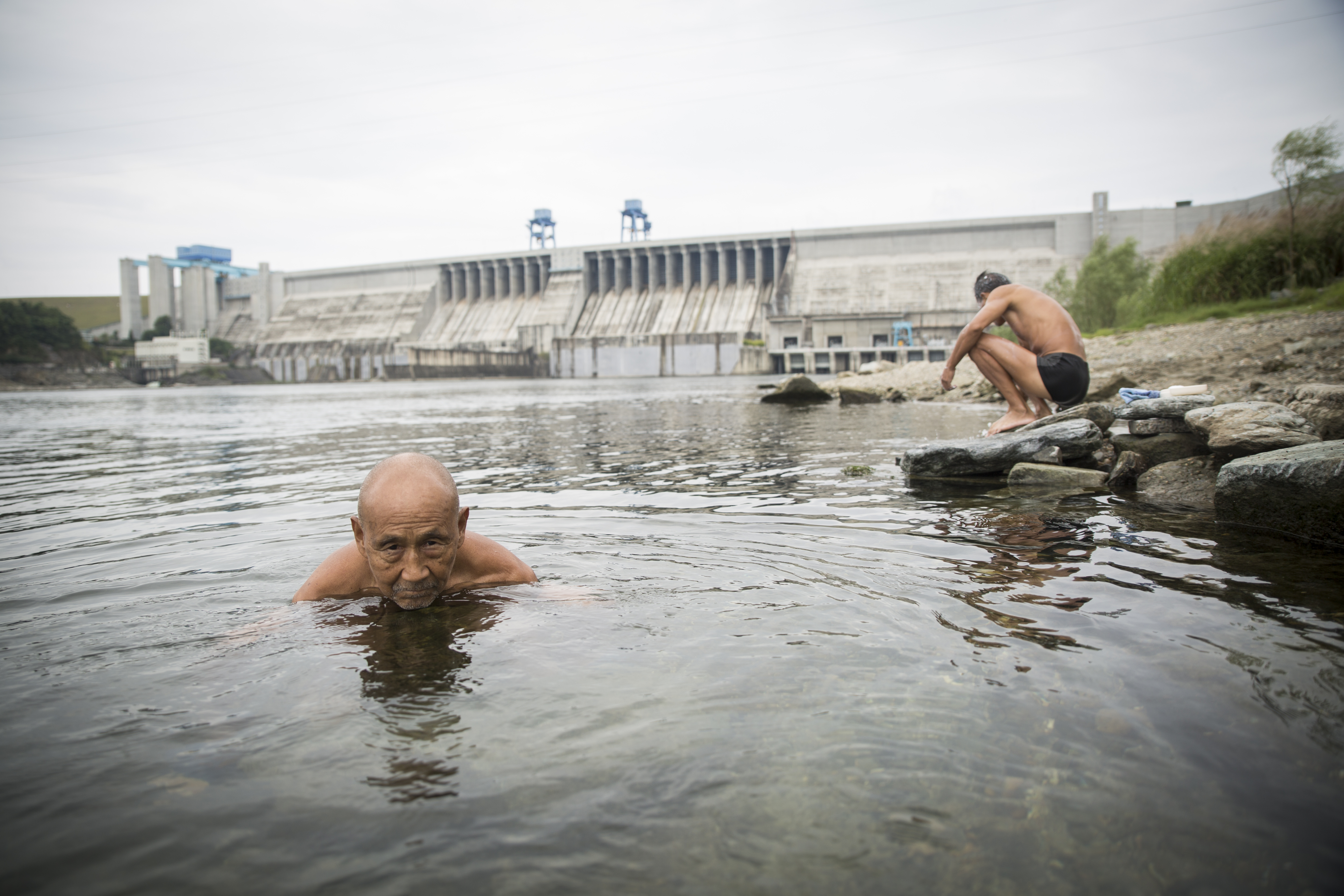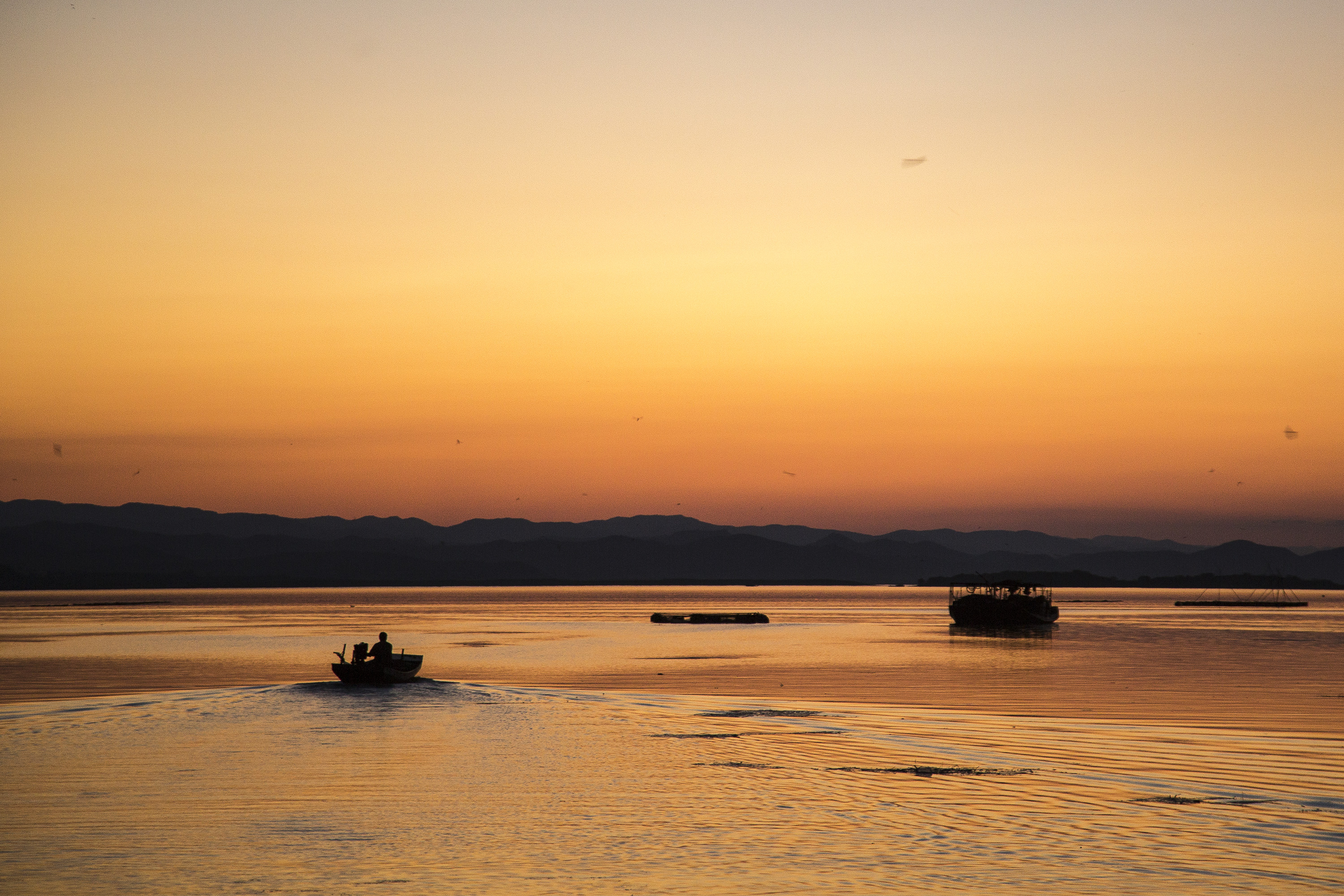
China's South-to-North Water Transfer Project will shift billions of cubic meters of water to alleviate the country's water crisis on the North China Plain and Beijing. Meanwhile hundreds of thousands of people who live in the regions giving up their water have been forcibly relocated and many more live in areas where development has been stagnated by the project. Two channels in eastern and central China are already in action, a third route in the west is still pending.
During the course of the year that I filmed him, fisherman Cao Suizhou's hair turned from jet black to white, a potent sign of stress for a man who otherwise endures his worries in silence. When asked what he wants people to know about China's radical remedy to its water crisis - he said "Just to understand what we've gone though, we know we can't fight it or change anything, but people in Beijing should know where their water is coming from."
The truth is, few people really do understand where their water is coming from. The official narrative is generally presented as a comparative few citizens admirably sacrificing for the greater good. In fact, the consequences of the project are sweeping and prolonged, leaving a legacy of human turmoil affecting millions. The region sending its water remains one of China's poorest and the country's Beijing-centric policies look set to further impoverish the area.
The project is also presented as a water rich south rescuing the drought-ridden north. But while climate is undoubtedly a huge factor, many of the north's water woes are manmade - pollution, rapid urbanization and industrialization. Diverting water will, for some time at least, slake the thirst of Beijing and the farmland and factory towns beyond, but it won't solve the problem.
The starting point for the central channel that will funnel water northwards, is Danjiangkou Reservoir. Cao Suizhou grew up in a tiny village on the north eastern shore of the reservoir and its waters have provided his livelihood since he was a teenager.
Diverting water, rerouting opportunity
Cao Suizhou is used to moving. He's been forcibly relocated three times for the country's colossal water projects and each time he's had to rebuild his life from scratch. In his first move, he tells me, residents were barely compensated and were shifted out of their homes and into wooden huts on higher ground. After a few years of saving his family built their own home themselves. In 2009 Cao's village was moved away from the reservoir to make way for the water diversion, his small business was torn down along with his home and he was forced to forsake family life to maintain their living. While his wife and grandchildren relocated to the new village - Cao returned to the reservoir and moved onto his small blue boat. Every time I visited, he'd be in a different spot on the reservoir based on what was good for the fish. Sometimes there were a few other boats around, other times he was completely isolated. In the quiet fishing season, when Cao net fishes in the early morning and just needs to check on his fish cages once or twice each day, the boredom and loneliness is palpable. He misses his wife and grandchildren terribly, he told me, but also the buzz of the village, having lunch followed by a tipple with a friend in the afternoon.
It's not just Cao of course, and it's not just the official figure of 350,000 forced to relocate. Beijing doesn't simply need water, it needs clean water. While much of the rest of China boomed in recent decades, the upstream region which feeds the reservoir - home to some 17 million people - has endured more than a decade-long development freeze. In order to keep the water source unpolluted, factories were shuttered, mines closed and roads and other infrastructure was never built. Tens of thousands lost their jobs and few are being generated in the stagnant economy.
The human costs of China's massive water projects have always been high and span decades. Tens of millions of mostly poor farmers have been forcibly uprooted. Many end up further impoverished - the social and economic blows of displacement include losing land, jobs and homes. Meanwhile communities have splintered and social and business connections have been severed.
Since the 1990's, locals in the reservoir area have known they would be displaced, but not when. Construction of new houses, roads and power grids was suspended. They say they lived in limbo for two decades, that most never even bothered fixing up their own homes - as they never knew when they'd be moved on.
During the first of many waves of construction for the Danjiangkou Dam, which forms the reservoir where Cao now fishes, around 100,000 people were forced to relocate, reportedly no housing or farmland was provided and resettlement officials simply ordered residents to move and handed them over some cash in bags. China's mega hydropower projects persist today, and while the government has drastically improved resettlement policies in recent years, actual implementation remains wracked with corruption.
The future for the region looks bleak too. Britt Crow-Miller, a geographer at Portland State University, who conducted doctoral research on the water-diversion project explains,
"Water is a fundamental lubricant for urban and industrial growth. If you are transferring water away from your community, you're really transferring longterm opportunity away from your community. So what does it mean for these places that down the road potentially won't have access to adequate water resources".
A history of mega hydro-projects
It was the human impact of water issues that initiated my first trip to China in 2003, I was studying photography and read a news article on the Three Gorges Dam, I couldn't fathom how over a million people would be moved, or how thousands of villages and hundreds towns could be submerged. What does that even look like I wondered? It was a mammoth project in many ways, built at huge economic, environmental and human costs. The project was highly controversial but at that point unstoppable. In the month or so I spent photographing, I saw first hand the human impacts and rights violations that came with forced relocation. Today, over a decade later, the project remains plagued with problems, and in 2011 even the government admitted that there were urgent human and environmental impacts.
Unlike the Three Gorges Dam and other big hydropower projects, some of which have been successfully lobbied against, Chinese NGO's and researchers seem conspicuously hushed about the South-to-North Water Transfer Project. For one thing the project doesn't have the same kind of grandiose engineering icon to rally around - as Britt Crowe Miller told me "this project is a series of ditches in the ground". Secondly, the diversion is a central government, rather than regional directive. Environmentalist Dai Qing was imprisoned in solitary confinement for 10 months for criticizing the Three Gorges Dam. She was not alone and many others were beaten and arrested for speaking out about the epic State project. It seems that history coupled with China's current oppressive climate has intimidated people. A number of organizations and researchers I spoke with whispered apologies - either for not being able to say more, or for not talking to me at all.
A drop in the ocean
Ultimately the South-to-North Water Transfer Project provides a life-line not a sustainable solution. Without implementation of equally extensive plans for water management and protection, the 45 billion cubic meters it will divert are just a drop in the ocean. The time the project has bought will need to be used wisely if more radical solutions are to be avoided in the future.
Another far more drastic water diversion proposal is still pending in western China, its social and environmental ramifications would be considerably higher. Water researchers Ma Jun and Britt Crowe Miller worry that just having these kinds of fall back strategies on the table makes it easier for policy makers and industry to ignore and drag their feet on tackling fundamental drivers like pollution and inefficiency.
There is some hope. Last year, China issued its most comprehensive policy to date to improve water quality. Leading ministries have been assigned to tackle specific points of a decisive 10-point water plan. This kind of accountability may mean less passing of the buck, which has often crippled previous plans. Further ambitious water management policy also is high on the agenda. The will to tackle China's water crisis is present, but with so many urgent priorities all vying for attention in a slowing economy, it's still uncertain how successful implementation will be.
The last time I spoke to Cao it was busy season, he was acting as a middleman for silverfish dealers from Wuhan, a metropolis in the neighboring province. He'd woken up at 3am to fish, and as we left, he was still sweating in the cold dark night as he hauled crates of glistening fish into a van. He urged me to hurry up and publish the reporting soon. Like Cao, I understand that nothing can be changed, but I also share his sense of urgency. China's passion for constructing mega-projects to solve its water issues are coupled with devastating impacts. The human suffering and environmental consequences of the diversion project should be acknowledged and heeded for the future.

Education Resource
Meet the Journalist: Sharron Lovell
Sharron Lovell dives deep into the human impact of the Chinese dam projects. With millions of people...





